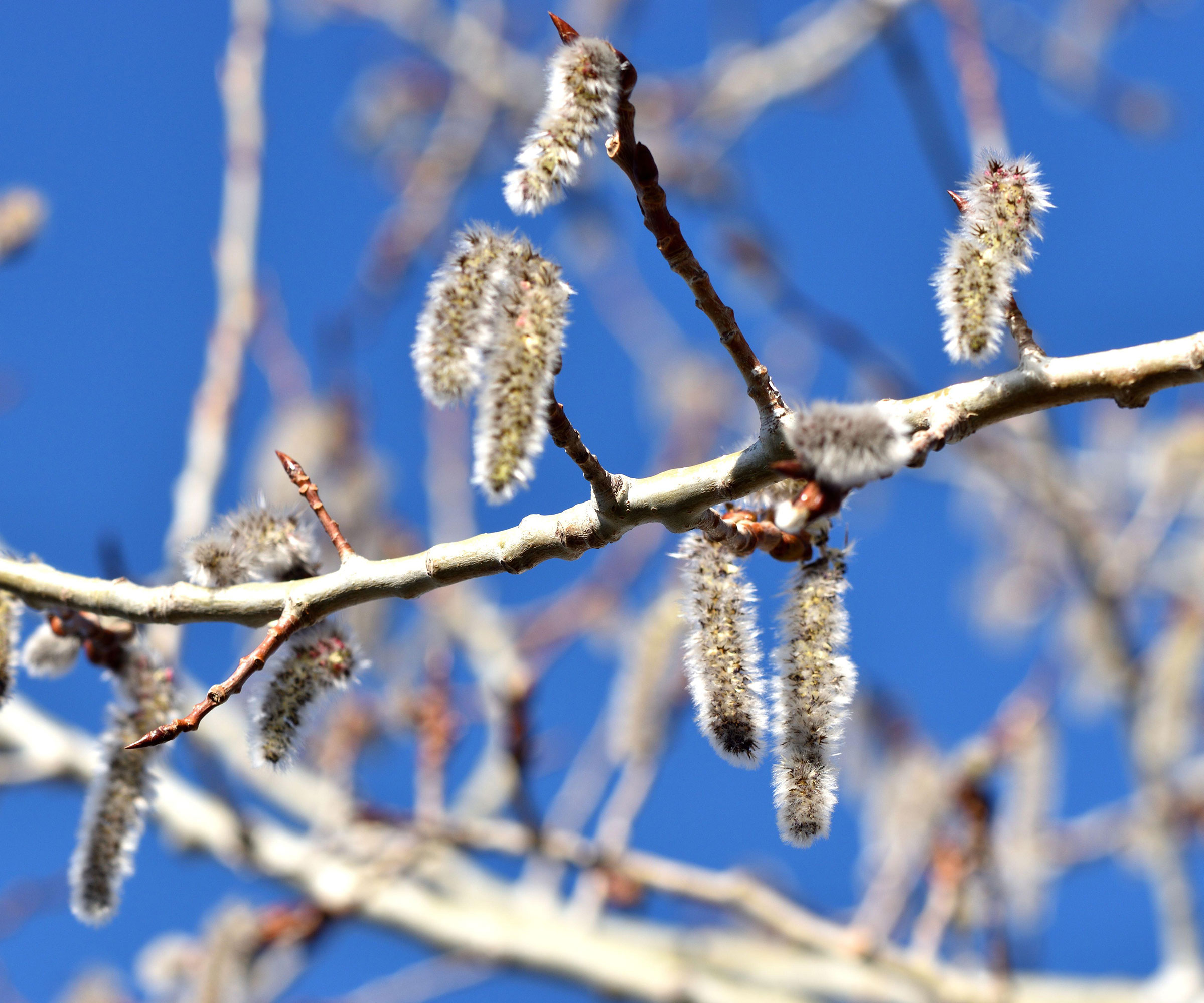Quaking aspen care and growing guide – expert tips for these tall and colorful deciduous trees
Famous for its stunning fall foliage, the native quaking aspen tree would make an eye-catching addition to a large backyard


Through the late fall, it’s hard not to notice vast colonies of golden-leaved, white-barked trees dominating the wilder landscapes of the many US national parks. These are most likely Populus tremuloides, the quaking aspen, a native North American tree species that grows extensively in the cooler regions, from Canada to central Mexico.
Quaking aspen is a tall, striking, deciduous tree with pale, almost birch-like bark, that adds to the luminous qualities of these trees in the wild. The common name, quaking aspen comes from the typical fluttering or trembling of the leaves that gives the tree a wonderful sensory dimension of movement and light in the landscape. This characteristic tremble is due to the unusually narrow leaf petiole or stalk, that makes the foliage very sensitive to even the slightest of breezes.
Like other members of the botanical willow family Salicaceae, quaking aspen is a fast growing tree, putting on as much as 6ft in a year, but it is not very long lived. However, they will naturally put out suckering shoots that ultimately replace the original tree when it dies. As a native species, quaking aspens are stunning fall trees, plus they are good for supporting wildlife. They are a food source for a range of mammals and birds from beavers, deer, moose and elk to rabbits, muskrats and woodpeckers, as well as a range of butterflies and moths.

Stunning fall foliage is a key feature of quaking aspen trees

An expert gardener, Camilla has designed planting schemes for gardens large and small in the UK, as well as working on TV gardening shows for the BBC. She has also written an extensive range of features on plants and how to grow them, and is a regular contributor to Amateur Gardening magazine.
Quaking aspen key facts:
- Plant type: Deciduous tree
- Mature size: Height, 50ft. Spread, 30ft
- Soil type: Fertile, moist but well drained woodland soil
- Soil PH: Acid to alkaline
- Time of year to plant: Fall
- Flowering time of year: Spring
- Flower color: Pale catkins
- Hardiness zones: USDA 2-8
- Scientific name: Populus tremuloides
- Common name: Quaking aspen
Types of quaking aspen
There are no known cultivars of quaking aspen, however, it will naturally hybridize with its close relatives the bigtooth aspen, Populus grandidentata and white poplar Populus alba.
Also, when sourcing Quaking aspen, check that you don’t plant the similarly named Populus tremula that is the equivalent European species, therefore more suited to growing in temperate zones across the Atlantic. This species has very similar characteristics to its North American cousin, with the typical fluttering leaves on thin stems, brilliant yellow fall coloring, and male and female catkins in spring.
There is also a fastigiate cultivar of the European quaking aspen, Populus tremula ‘Erecta’, that has a very narrow, upright habit, making it more suitable for boundaries or urban planting schemes.
How to use quaking aspen in your yard
These aren't a suitable tree for small gardens, so are best suited to a large backyard, particularly if you have a wilder, woodland area to plant up. To really appreciate the beauty of a quaking aspen, plant trees in multiples of three or more, spaced around 10ft apart. You could plant in a row, or as an informal grove of trees. The multiple planting will give you a great display of the golden quaking aspen fall colors.
Design expertise in your inbox – from inspiring decorating ideas and beautiful celebrity homes to practical gardening advice and shopping round-ups.
Many suppliers don’t recommend planting female trees as the fluffy spring catkins can cause unwanted mess in a more manicured backyard setting. Male quaking aspen specimens are generally preferred. The other caveat is to plant well away from buildings and backyard paths, as the suckering, spreading root system could cause disturbance to hard landscaping and other constructions.
To recreate a naturalistic setting for quaking aspen, you can landscape around trees with the type of native understorey shrubs and perennials that might commonly be found growing alongside wild aspens.
Depending on which area of the country you’re in, these might include a mix of American hazel, Corylus americana, alders such as Alnus rugosa, red-osier dogwood, Cornus sericea, the serviceberry, Amelanchier alnifolia, common juniper, Juniperus communis, the Oregon-grape, Berberis repens, and elders such as Sambucus pubens.

As they are tall and fast growing, quaking aspens are only suited to larger backyards
When, where and how to plant
Quaking aspens grow commonly in damp, open, sunny areas in the northern and western United States, although it is an adaptable and successful tree that will grow in similar settings in Asia and Europe too. They do not tolerate high summer heat or pollution in urban areas, so are best suited to larger landscapes.
The best time for planting a bare-root tree is the fall, when the ground is warm and soft and rainfall should be plentiful, allowing new roots time to establish before the next growing season. However, guidance from Julie Janoski, plant clinic manager at The Morton Arboretum in Chicago, says that because of their fibrous root system, aspens can be planted from spring through fall as long as weather conditions are favorable.
To plant your tree, dig a large hole, wider and deeper than the root ball, add some well-rotted compost and back fill with soil, firming in around the base of the tree. It may be necessary to add a supportive stake for young aspen saplings, particularly if planted in a more open setting where they could be prone to wind damage. Water in well and continue to water regularly until the tree is established.
Care tips
Once you have planted your quaking aspen sapling, make sure you water well for the first year or two, even through drought conditions, while the young trees establish. To contain the growth, remove any suckering shoots sprouting from the roots.
Once your quaking aspen is growing in your yard, it will require very little ongoing maintenance in terms of feeding and pruning. However, mulching in spring will help to reduce any stress on the tree and take care not to damage the bark or roots during routine maintenance as this can allow fungal diseases to take hold.

Quaking aspen trees require little ongoing care once they are established, but you will need to remove root suckers to stop it spreading and creating a colony
How to make more Quaking Aspen plants
Quaking aspen trees reproduce by seed from the spring catkins of male and female trees. They also reproduce asexually by sending out root suckers. If growing aspens at home, these suckers should be removed to stop the tree forming what is known as a ‘clonal colony’. This is when older stems are replaced with the new, suckering shoots that are genetic clones of the parent. These grow to form a thicket and in the wild, what might look like a grove of many different trees has often grown from a single stem.
In his book Trees: From Root to Leaf (available at Amazon) author and tree expert Paul Smith describes how a clonal colony of quaking aspen in Fishlake National Forest in Utah, thought to have originated thousands of years ago, known as ‘Pando’, covers 108 acres and is recorded as the heaviest living organism.
Quaking aspen can also be propagated by taking hardwood cuttings from plants.

Fluffy catkins will flower on the trees in the spring
Common problems
Aspens can suffer from rusts, powdery mildew, cankers, caterpillars, borers, aphids and scale insects. Aspens are also prone to black spot, a fungal disease that thrives in wetter locations.
At the SevenOaks Native Nursery in Albany, Oregon, they grow 150,0000 bare root aspen for wholesale supply, from seed that has shown resistance to black spot. 'We grow aspen using a Northern Idaho seed source. We have found that trees from this source have a resistance to black spot,' confirms co-owner Mike Ridling.
Pruning tips
Remove the suckering shoots that appear at the base of the plant, and once the tree is established, you can carry out some formative pruning, to suit the space and location, removing any branches that are too low, or any dead, diseased or dying tree limbs.
FAQs
Where do quaking aspens grow best?
Quaking aspens naturally grow in woodland areas, in sunny, open sites on well drained fertile soil types. They will tolerate damper, heavier soils, and also can cope with coastal settings being tolerant of salty air. However, dry soil and deep shade will conspire against aspens and these conditions are not conducive to good, healthy growth.
Is there a difference between aspen and quaking aspen?
Aspen is a broad term that includes the quaking aspen which is just one tree species in the populus genus. This genus includes several other trees such as poplars and cottonwoods and you might sometimes find quaking aspens referred to as aspen poplars. The bigtooth or largetooth aspen, Populus grandidentata, is another naturally occurring variety with more pronounced serrated leaf edges.
Where to buy quaking aspens
- Shop quaking aspen trees at Amazon
- Shop quaking aspen trees at Fast Growing Trees
- Shop quaking aspen trees at Nature Hills
- Shop quaking aspen trees at Sevenoaks Native Nursery

In her years of gardening, Camilla has designed planting schemes for gardens large and small in and around London, written about plants and how to grow them, and worked on BBC gardening TV shows in the UK. She's also works as a therapeutic horticulturist, teaching growing for wellbeing and mental health.